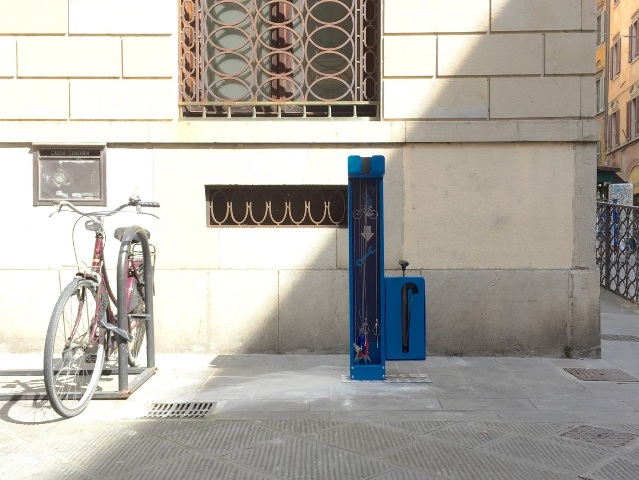The city, faithful to the Pisan Republic, defended by strong walls and protected by the waters of the River Serezza and the Arno, had endured nine months of siege in which assaults carried out with bombards, catapults, mobile towers and rams followed, but in the end he gave up on hunger. The Florentines thus came into possession of a center on the banks of the Arno from which river trade and the nearby branch of the Via Francigena dominated, controlling the flows of pilgrims, merchants and the prosperous countryside around the slopes of Mount Pisano. With the fall into the hands of Florence it was thought to reinforce this important conquest to discourage the sights of the neighbors. The decision was made to build a fortress that was impregnable and discouraged the pitfalls of the Visconti armies that threatened Tuscany from Lucca. The Florentine government commissioned the famous architect Filippo Brunelleschi to design the new defensive work. Brunelleschi’s proposal was immediately very innovative: at the presentation in front of the government commission which also included the young leader Francesco Sforza, thanks to a model in clay and wood, the famous architect convinced everyone for the innovative solutions designed.
To build the new work, the town of Vicopisano was heavily modified: the churches and palaces that were in the area of the top of the Vico hill were largely demolished. Brunelleschi’s fortification incorporated the pre-existing Tower of S. Maria (12th century) into the new structures. The latter was transformed into the keep of the current fortress. The typology of the fortress is still medieval, with high crenellated walls resting on arches with seals to cast inflamed Greek pitch and hot oil on the attackers. But in the defensive complex there are also many innovations such as the abundant use of drawbridges intended, when withdrawn, to isolate the various parts of the fortress in case the enemy managed to penetrate it. For example, before entering the courtyard of the fortress, you had to conquer the front door equipped with a drawbridge and a moat. Inside, in case of loss of the courtyard, the defenders could break down the staircase resting on four slender arches that connects the courtyard with the patrol walkway. If the enemy had managed to reach the curtains, the defense would have stood in the tower: it was possible to isolate the tower from the rest of the fortification by withdrawing the drawbridge that connects the patrol path with the only entrance of the same. The tower, equipped with its own cistern and supplies of provisions, could still last for a long time.
The most ingenious solution designed by Brunelleschi is surely the mighty crenellated wall that descends from the Rocca to the foot of the Colle, where it ends with the high Soccorso tower (21 m) built near the Arno, which at that time passed right under the walls of Vicopisano. As the name of the tower suggests, this work was intended to avoid isolation in the event of a siege by guaranteeing the supply of food, weapons and reinforcements by river in the event of a siege.
The boats could land in a cove, defended by fortifications that have now disappeared, unload men and dust that were brought in by a narrow hatch, then they went up to the second floor of the tower, to access the wall and climb to the Rocca. But Brunelleschi had thought of everything: in fact, if the enemy had succeeded in conquering the Torre del Soccorso and had tried to access the fortress from the wall, he would have found himself exposed to the pull shot from the Rocca, but above all he would have found the connection between the wall and the patrol path of the curtains of the Rocca from another drawbridge, which opened a passage of about three meters on a cliff of fifteen meters. Today the Pisan flag is flying over the tower of the fortress, but there are no winds of war, only visitors who climb to the top of the fortress to admire the view.
(from leviedelbrigante.it)


